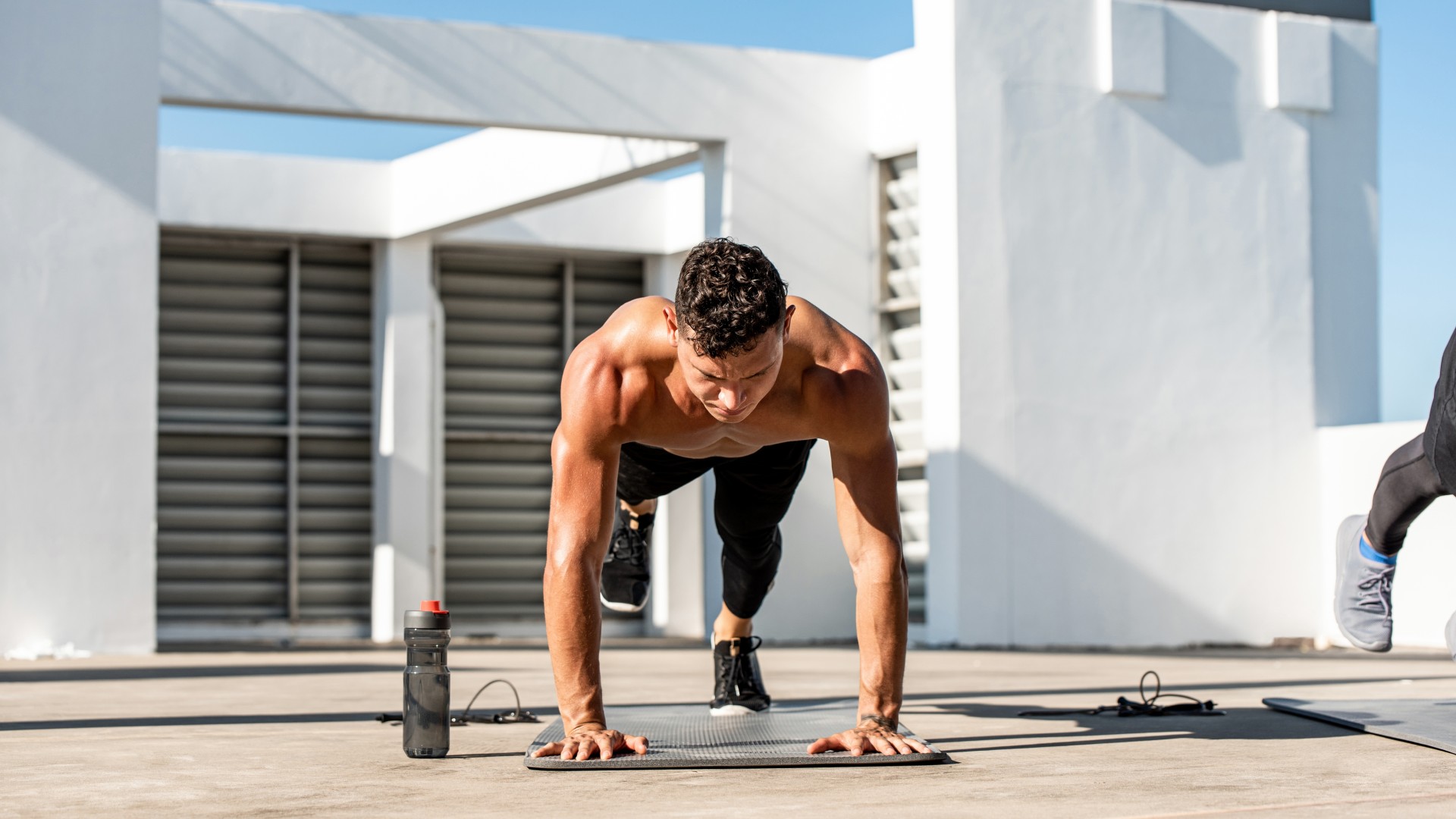
Easing into a new year of fitness doesn’t mean spending hours in the gym. In fact, you can use this 20-minute calisthenics workout to build full-body strength and improve overall fitness without equipment.
Think again if you don’t believe 20 minutes can torch your whole body — it can. Just roll out one of the best yoga mats for home workouts and give these 20 bodyweight moves a try.
The routine below, curated by YouTuber Viktor, who goes by Vitality, says “Get ready for this 20 min full-body calisthenics workout which will prepare you for skills like the human flag, planche, any lever...”
Don’t worry if you’re not familiar with these calisthenics terms as each move in this bodyweight routine is beginner-friendly and follow-along while still targeting the same muscle groups engaged during more advanced calisthenics skills.
Watch Vitality’s 20-minute calisthenics workout
“You can do this full-body workout at home and without any equipment,” says Viktor. “No bars, no parallettes…the only thing you need is yourself. Do every exercise with full range of motion and focus on eccentric (negative) movements. This will boost your gains and progress tremendously.”
In the battle of concentric versus eccentric muscle contraction, focusing on the eccentric loading phase is backed by research to offer significant gains, including building strength, muscle and stability.
During bodyweight movement, and during each rep of the exercises below, really slow down the eccentric phase and focus on muscular engagement (contraction) and control.
During a push-up, the eccentric phase will be when you lower your chest toward the floor; as you lower your hip to the mat during a side plank push-up, this is also an eccentric loading phase.
When your body is meeting with and overcoming the most resistance — think standing from a squat — this is referred to as a concentric motion. I find eccentrics an accessible way to play around with tempo training and increase the difficulty of an exercise when you’re not using weights.
Bear in mind that some exercises in this workout — the planche lean and boat hold, for example — use an isometric contraction, meaning your muscles won’t flex or extend. Isometric contraction is a low-impact way to build strength and endurance without movement.
There’s also a healthy slab of core work involved, which is perfect for those looking to bring ab workouts into their training.
There are 20 movements and you’ll work for 40 seconds and rest for 20. Viktor recommends following your own warm-up beforehand to prepare the muscles and joints for movement.
There’s also a healthy slab of core work involved, which is perfect for those looking to bring ab workouts into their training. After all, your core muscles are the key drivers during exercise, keeping you safe and stable as you lift, run, throw, or walk.
In particular, you’ll need strong core muscles to perform all calisthenics skills, and in turn, you’ll build a stronger core as a result of calisthenics workouts. Standing upside down on your head doesn’t happen from a weak core, believe me.
You don’t need to have an experienced understanding of calisthenics to try this routine, but I do recommend learning how to engage your core properly and having a basic understanding of bodyweight training first.
Learning to support and work with your own weight using the full range of motion (that means no half or quarter reps) and control will build more robust and stable joints, ligaments, bones and muscles, and improve your levels of relative strength, too.
Expect exercises like Russian twists, a few push-up variations, lunges, squat holds and full-body crunches, but also anticipate more technical movements like pseudo planche push-ups, which require you to turn your hands out to the sides.
You can always perform push-ups from your knees, but for the pseudo push-up, warm your wrists up properly and play around with positioning depending on your forearm strength and flexibility.
More from Tom's Guide
- Forget regular push-ups — try banded hover push-ups to strengthen both your upper body and core
- Forget squats — this kettlebell workout builds a stronger core and boosts balance and stability in just 30 minutes
- I did 100 butterfly glute bridges every day for two weeks — here’s what happened to my lower body







